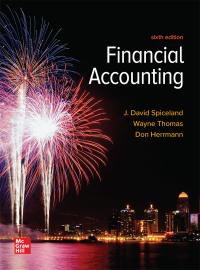Question
Need help with this project. Calculate AAPs cost of equity capital using the CAPM, the risk-free rate you collected in step 2, and a market
Need help with this project.
- Calculate AAPs cost of equity capital using the CAPM, the risk-free rate you collected in step 2, and a market risk premium of 10%.
- To get AAPs cost of debt and the market value of its long-term debt, you will need the price and yield to maturity on the firms existing long-term bonds. Go to http://finramarkets.morningstar.com/BondCenter/Default.jsp?
click Search, click Corporate, type AAP ticker Show Results. A list of AAPs outstanding bond issues will appear.
Assume that APPs policy is to use the yield to maturity of its 10 year obligations as its cost of debt (or closest maturity). Find the bond issue that is as close to 10 years from maturity as possible. (Note: It is also best not to select a Callable Bond.)
Find the yield to maturity for your chosen bond issue (it is in the column titled Yield) and enter that yield as your pretax cost of debt into your spreadsheet.
Next, copy and paste the data in the entire table of info listed for AAP the FINRA web pages into Excel . [For a quick way to do this, refer to Appendix 1]
- You now have the price for each bond issue, but you need to know the size of the issue. Returning to the Web page, go to the row of the bond you chose and click the Issuer Name in the first column. This brings up a Web page with all of the information about the bond issue. Scroll down until you find Amount Outstanding on the right side. Noting that this amount is quoted in thousands of dollars (e.g. $60,000 means 60 million) record the issue amount in the appropriate row of your spreadsheet. Repeat this step for all of the bond issues.
- The price for each bond issue in your spreadsheet is reported as a percentage of the bonds par value. For example, 104.50 means that the bond issue is trading at 104.5% of its par value. You can calculate the market value of each bond issue by multiplying the amount outstanding by Price /100. Do so for each issue (listed on the first 2 pages of bonds) and then calculate the total of all the bond issues. This is the market value of AAPs debt.
- Compute the weights for AAPs equity and debt based on the market value of equity (Market Capitalization) and AAPs market value of debt, computed in step 5.
- Assuming that AAP has a tax rate of 20%, calculate its effective cost of debt capital.
- Calculate AAPs WACC.
- Calculate AAPs net debt by subtracting its cash (collected in step 2) from its debt. Recalculate the weights for the WACC using the market value of equity, net debt, and enterprise value. Recalculate AAPs WACC using the weights based on the net debt. How much does it change?
- How confident are you of your estimate? Which implicit assumptions did you make during your data collection efforts?
- Looking at the yields of all the AAP bonds outstanding, How would have the WACC changed if you had calculated the cost of debt using the information for all the bonds outstanding instead of just using the 5 year bond (Do an estimate. Dont recalculate)


Step by Step Solution
There are 3 Steps involved in it
Step: 1

Get Instant Access to Expert-Tailored Solutions
See step-by-step solutions with expert insights and AI powered tools for academic success
Step: 2

Step: 3

Ace Your Homework with AI
Get the answers you need in no time with our AI-driven, step-by-step assistance
Get Started


